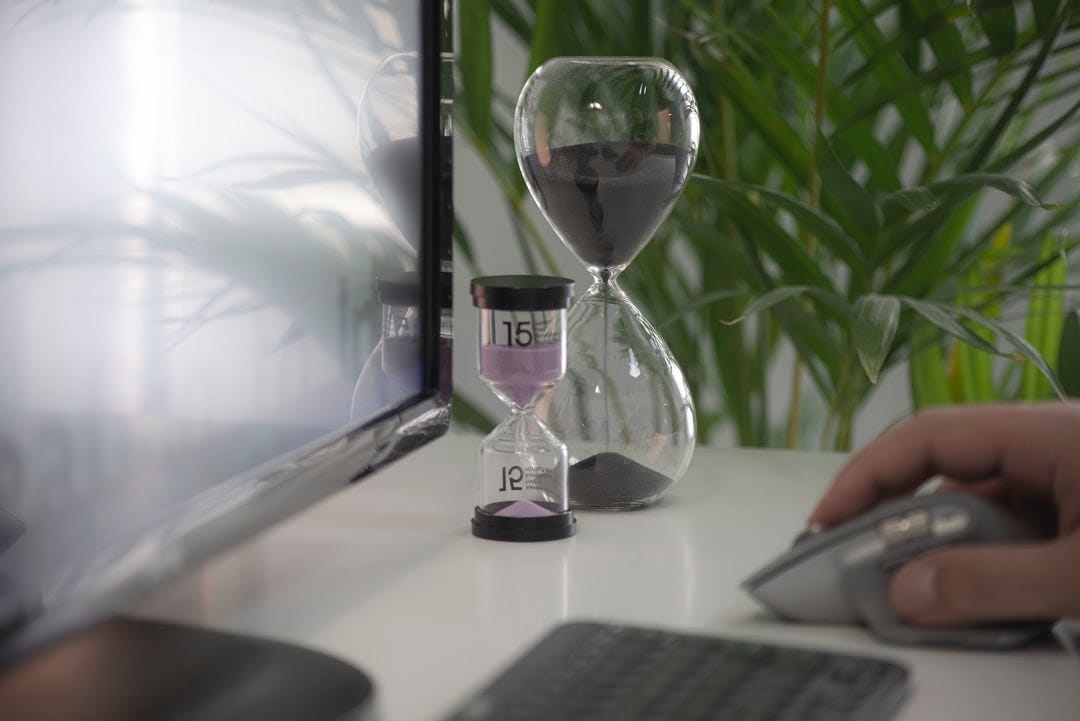Now that companies have many more moving parts to consider, a project manager’s job is becoming increasingly difficult. Time tracking is now an essential part of organizations, especially those trying to scale, as it enables your teams to complete their tasks efficiently and to a high standard.
In this blog post, we’ll discuss how project time tracking can help you scale, and you’ll learn some valuable tips for implementing time tracking successfully in your organization.

What is Project Time Tracking?
Project time tracking is usually done via project management software specifically designed to track project hours. It’s useful for teams with more than one project going on at once, as it allows project managers to see where resources are going and whether certain resources need to be reallocated.
Many project time tracking systems are easy-to-use and multi-platform, so project managers and their teams can track project hours on the go. In addition, these systems often integrate with other organizational software like Google Drive and Slack to provide a seamless experience for project managers.
Project time tracking also provides companies with plenty of useful information they wouldn’t otherwise have access to, making it an essential component in scaling your business.
The Benefits of Project Time Tracking
As a manager with limited time on your hands, you may be wondering–how exactly does tracking the hours of a project help your company scale? Here are just a few of the benefits project time tracking offers scaling companies:
Easier Project Management
One of the benefits of implementing a project time tracking system is that it’s a simple and effective way to improve project management. It helps project managers work more efficiently by providing them with all the information they need in one place instead of forcing them to jump from system to system or relying on memory.
With the right software, project managers won’t have to waste hours every week trying to figure out where project team members are spending their time. Project time tracking allows you to see all of your team members and their assigned projects in one seamless report.
These features will save you countless hours by eliminating the need to track team progress manually. Using software also decreases the likelihood of important details slipping through the cracks, like upcoming deadlines or misused resources.
Better Allocation of Projects & Resources
With project time tracking, project managers can allocate their tasks and resources more efficiently across teams. In addition, it reveals which projects are being given priority over others at any given time, so if there are delays in one project, you’ll be able to get your hands on additional resources for its completion without any issue.
This also means project managers will have an easier time prioritizing tasks within each project since they’ll know what needs attention first. By allocating resources and prioritizing tasks from the get-go, your scaling efforts won’t go to waste.
Access to Invaluable Insight
Project time tracking helps scale your business by collecting a wealth of valuable information you might not otherwise have access to. For example, when you start looking at project hour reports carefully, you begin to notice trends in the data that indicate how time is being spent (and where it is being wasted!)
Project time tracking also lets managers see the real-time progress of a project’s status without waiting for monthly reports or asking questions via email. Often, time tracking tools will automatically generate custom data reporting, making it easier than ever to streamline your data instead of trying to make sense of things yourself.

How to Implement Project Time Tracking
We’ve stressed the importance of project time tracking for any scaling business, and although the software is relatively easy to use, implementing the system is a challenge of its own. Here’s a list of the best practices to ensure your project management tool is integrated smoothly and seamlessly into your company’s project management system:
Create a Template for Documenting Your Work
A project time tracking tool won’t do you any good if your employees can’t use it properly. Make sure everyone is prepared before project management begins by creating a clear and concise template your team can use, including specific details about the project they’re working on.
Having a template means there’s less room for confusion when filling out your project time tracking software. Your project tracking templates should clearly state what task needs to be completed at each milestone or deadline of the project. In addition, it’s best to provide information about any changes made and who approved them to avoid misunderstandings.
You’ll also know precisely where to look for the information you need, which means you’ll spend less time searching and interpreting data.
Track Hours on Projects as You Go
Like other time tracking systems, it’s always best that your employees log in their hours daily or, even better, as they start and finish a particular task. This way, project managers will always have an up-to-date project time tracking report that they can reference at any moment.
Coupled with the convenient template you created prior, project management software will simplify your employees’ life. They’ll enjoy documenting their hours on tasks knowing that the software saves them from having to fill out a lengthy project hour report after completing work.
With the right software and time logging habits, your employees won’t feel like they’re wasting precious minutes on manual project tracking when there’s plenty else to do during busy days — and you won’t, either!
Set Up Alerts and Reminders
For project time tracking to be successful, managers should frequently highlight to their employees the importance and benefits of logging in hours. You could do this by creating project reminders that pop up on computer screens every day after work or by setting alerts that prompt the team to log their hours.
Setting up alerts and reminders also helps employees get into the habit of logging their hours regularly, especially if project time tracking is still new and relatively unfamiliar to them.
As you implement project management software and start using project hour reports more often, your employees will get used to the idea even if there was some initial resistance. They’ll begin to enjoy seeing the progress they make each day, using it as motivation for those busy days when inspiration might otherwise run dry.

How to Get the Most Out of Your New Tool
Whether you’ve already successfully implemented a project time tracking system in your organization or you’re still starting, it’s important to know how to use this project management tool as efficiently and effectively as possible.
You can maximize the potential of project time tracking by choosing mobile-compatible software. This way, project managers can access project time tracking data on their phones, tablets, or laptops while they’re away from the office.
It’s easy to input hours into project management software with a mobile device. It’ll save you some extra steps that could potentially eat up valuable minutes during busy days and help keep your employees accountable for logging in project times.
Presenting project time tracking data to everyone involved is another way to get the most out of project time tracking. Aside from developing a practical and easy-to-read template, project managers also have to make sure everyone involved in one way or another is aware of the project hour reports’ purpose.
Presenting your data keeps everyone on the same page, making project time tracking much more effective in the long run. It also helps you scale your business, as your employees can provide new perspectives and insights to help you make beneficial decisions for your project and business as a whole.
Why Choose Day.Io For Your Project Time Tracking Needs?
Day.io project time tracking software has all the features you need to efficiently track hours, make project hour reports, and much more. It’s also one of the best project management tools on the market today. Day.io is compatible with mobile devices too, which means employees can conveniently log their hours whenever they’re away from work or at home.
This project time tracking solution comes equipped with a simple user interface that’s easy for everyone involved in your business projects to understand. You’ll have complete control over what information goes into project time reports and whom those details are shared with, so there’s no room for miscommunication along the way.
You’ll also be able to see how many extra minutes each employee spends working on projects outside of normal work hours, which will eliminate unnecessary overtime hours and give you an idea if employees are putting in extra time because they feel inspired to do so or just for the sake of it.
What’s more, Day.io project hour reports include a separate section that shows how much time was spent on specific tasks throughout each day. Again, this is a helpful insight into what your team members were doing during their project-related workday rather than being bogged down by irrelevant details about lunch breaks or other distractions unrelated to business goals.

Final Thoughts
When appropriately implemented, project time tracking is a powerful tool. It can make project management easier, help allocate resources better, and provide valuable and actionable data. Therefore, it’s bound to help scale your business in many different ways and make your life easier as a manager.
